Use of command line
1. Find mysqlbin directory of phpstudy installation
2. mysql file location in phpstudy settings
3. Enter the bin directory of mysql, press the shift key + right key, and open the command line here.
mysql
#Enter mysql
mysql -u root -p

View all databases
show databases;
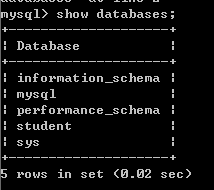

Create database
create database Database name;
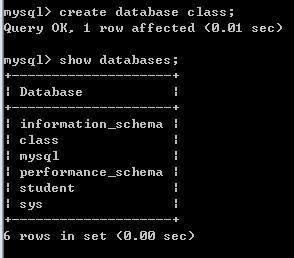
After adding, refresh the class database in the visualization!
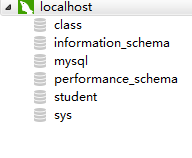
Modify the encoding format of the database
alter database Database name default character set 'utf8mb4';
In visualization, right create data and click database properties to view the utf8mb4 format
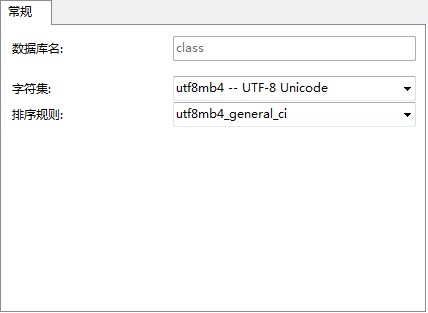
Select database
use Database name

Delete database
DROP database Database name
Create table
create table Table name( Field name type( int,varchar,date)[not null][comment 'Annotation information'], )

Right click refresh on the table

View all tables
show tables;
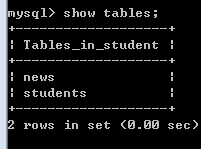
View the field information of the table
desc Table name;
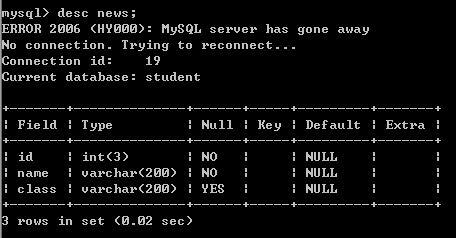
Modify table name
alter table news(Table name) rename new(New table name);
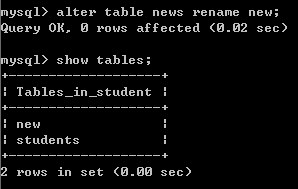
 ***
***
Delete table
drop table Table name;
Recorded operation
insert
Single addition
insert into Table name values(Value 1, value 2); insert into Table name values(Value 1, value 2);


Multiple additions
insert into Table name(Field 1, field 2...) values (Value 1, value 2); insert into Table name values(Value 1, value 2),(Value 1, value 2);
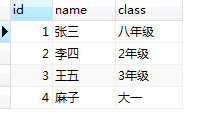
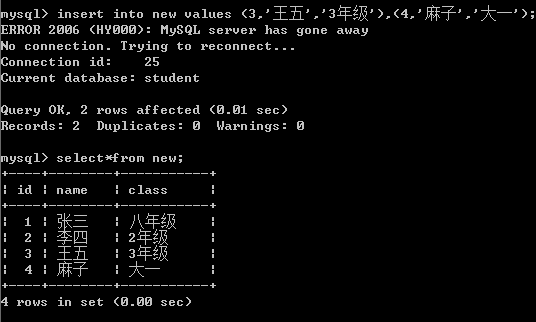
difference:
The first method is to write the fields that need to be assigned values
The second way is to assign values to all fields by default.
Delete
// Delete all records in the table delete from Table name; // Delete record with id 5 delete from Table name where Conditional judgment; // Delete a record that contains a character in the field delete from Table name where Field name like '%character%'
//Delete the record with ID 4 delete from table name where id = 5;
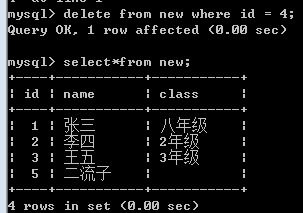
//Delete a record that contains a character in the field
delete from table name where field name like '% character%'
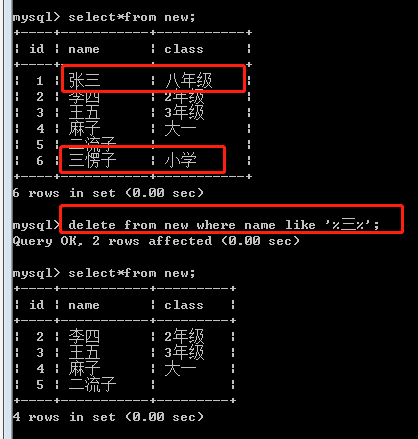
Update
update Table name set field = 'New value' where Conditional judgment; // Modify the value of multiple fields update classinfo set field = 'New value',field = 'New value' where id = 3;
//Modify the value of the class field in the new table with id 5 to grade 6;
update new set class = "sixth grade" where id = 5;

//Modify the value of multiple fields
//Modify the value of the class field in the new table with id 5 to one, and the value of the name field to Wang Fugui
update new set name = 'Wang Fugui', class = 'one book', where id = 5;
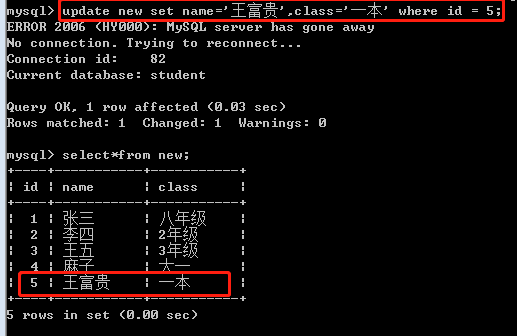
Select
Single table query
// Query all fields, all records * means all fields, and query without conditions means query all records select * from Table name; // Query some fields select Field 1, field 2 from Table name;
//Query all fields
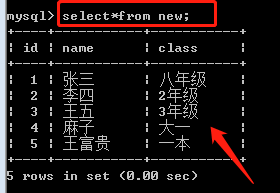
//Query some fields

Condition query
where statement
//Equal to query
select*from new(Table name) where id=1;
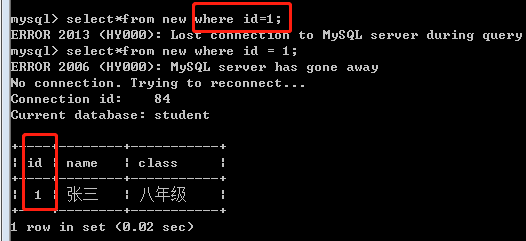
//Greater than less than query
select*from new where id > 2;
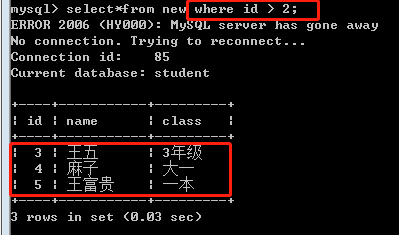
//Fuzzy query (like)
select*from new where name like '%king%';
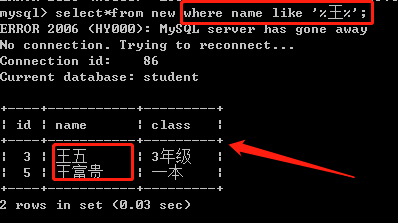
And and
Records that meet the conditions on both sides will be matched.
// Records that meet the conditions on both sides will be matched. select * from new where name like '%king%' and class like '%book%';

Or or
As long as the conditions on the left and right meet one, they will be matched.
// As long as the conditions on the left and right meet one, they will be matched. select * from classinfo where className like '%introduction%' or teacher like '%expensive%'

in
The value of the field before in will match as long as it is equal to any one in the parentheses.
// Multiple values can be specified in the where clause, and the values of the fields in the record will match as long as they are in multiple values. select * from classinfo where id in(1,2,3);
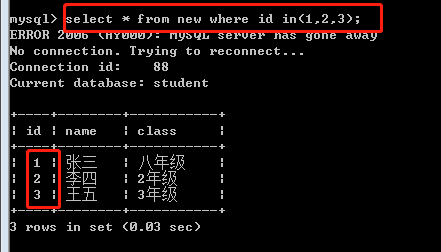
Advanced query
// Number of query records select count(*) from Table name; // Query the number of qualified records select count(*) from Table name where Conditional judgment;
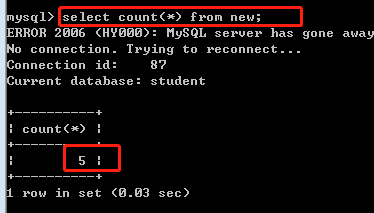
//Query the sum of qualified records
Select sum (field) from table name where condition judgment;
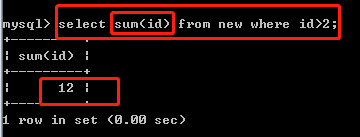
//Maximum
select max(id) from new where id>2;
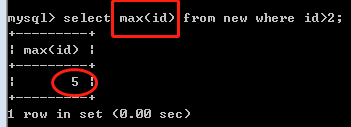
//Minimum value
select min(id) from new where id>2;
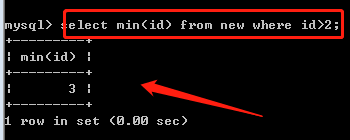
//The first parameter of paging indicates where to start the query, which is a subscript. Starting from 0, the second parameter is the number of queries.
select * from new(Table name) limit 0,2;
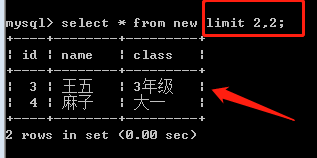
multi-table query
// multi-table query select * from Table 1 as Alias 1,Table 2 as Alias 2 where Association condition select * from student s,classinfo c where s.id = 1 and s.classId = c.id; // Left connection select * from student s left join classinfo c on s.classId = c.id; // Right connection select * from student s right join classinfo c on s.classId = c.id;